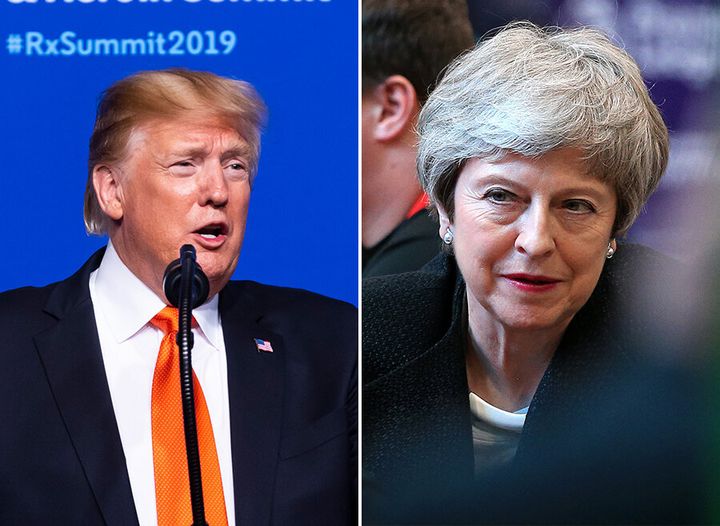
Donald Trump’s three-day state visit from 3 June is a bigger mistake than most probably realise. Of all Theresa May’s blunders, this could well stand among her greatest hits.
May was the first foreign leader to visit Trump at the White House rushing out to widely photographed awkward hand-holding through the White House colonnade. Trump is hardly the first US president to receive such an invitation from the Queen, but he has succeeded in doing what Ronald Reagan and Barack Obama never achieved in getting his now without needing to win a second term.
The only explanation given repeatedly for cosying up the Donald is a hope that a state visit with Her Majesty is a price worth paying for Trump to agree some new trade deal bring a bonanza home to Britain. Cue reminders only heard on this side of the Atlantic about the special relationship between the US and UK with the hope this old alliance could provide May the long-awaited lifeline she needs before her government is officially on life support.
May’s supporters will be nervous about the expected size and scale of record protests. This could see the return parade of the baby Trump balloon through London streets aimed at denting Trump’s ego as much as evening news headlines.
Rescinding a state visit is virtually unheard of. Leaders with controversial relations to the rule of law and human rights have been entertained before and will be afterwards. American presidents invite different treatment to some degree based on their own sense of uniqueness as self-proclaimed ‘leader of the free world’. It is only right that those who claim to uphold the highest standards are criticised for when they don’t rise to meet them, even if much better than dictators elsewhere around the world.
This is especially true for Trump and the long, dark shadow of the Mueller report hanging over his presidency. Its damage to Trump, his reputation and those closely associated to him is far from over.
But May’s mistake in wanting a state visit for Trump is not simply because state visits should not be used to buy a new trade deal with another country or because Trump’s values seem so at odds with ours. Her error is in thinking that rolling out the royal red carpet for Trump could lead to a Brexit bonanza.
We can be so absorbed by our own Brexit crisis in Britain that it can be easy to only think about how Trump might bail May’s leadership out with a deal instead of remembering what Trump promised his voters about the deals he would make. He campaigned to ‘Make America Great Again’. A key part of this pledge was to end America’s trade deficits with foreign countries. This was to be reversed and keep more dollars at home than sent abroad.
Trump might be wrong that he’s the greatest dealmaker in history. America’s trade deficit is now at a ten-year high and Trump has vowed to end it. After many years of running a deficit, the US runs a small surplus with the UK. Unless the man who wrote ‘The Art of the Deal’ can be fooled into a deal that breaks his campaign pledge to cut trade deficits, Trump won’t knowingly sign up to any such deal. This is especially so given he has vowed to fight for his re-election after bruising mid-election results that saw his Republican Party lose the House of Representatives and nearly lose the Senate.
In short, May’s offer of a state visit to win a more lucrative trade deal with Trump is the making of a deal for the wrong US president at the wrong time politically. As we’ve seen before when he last met with May, Trump’s loyalty is mostly to those he was close to before his election – and he has fired many of them, too. Perhaps May’s plan would work with a different leader in a different time. Trump’s visit shows no sign of leading to success and will only lower Britain’s standing in the world as our overeagerness to make any post-Brexit deal looks as desperate as it is.
Thom Brooks is dean of Durham Law School
